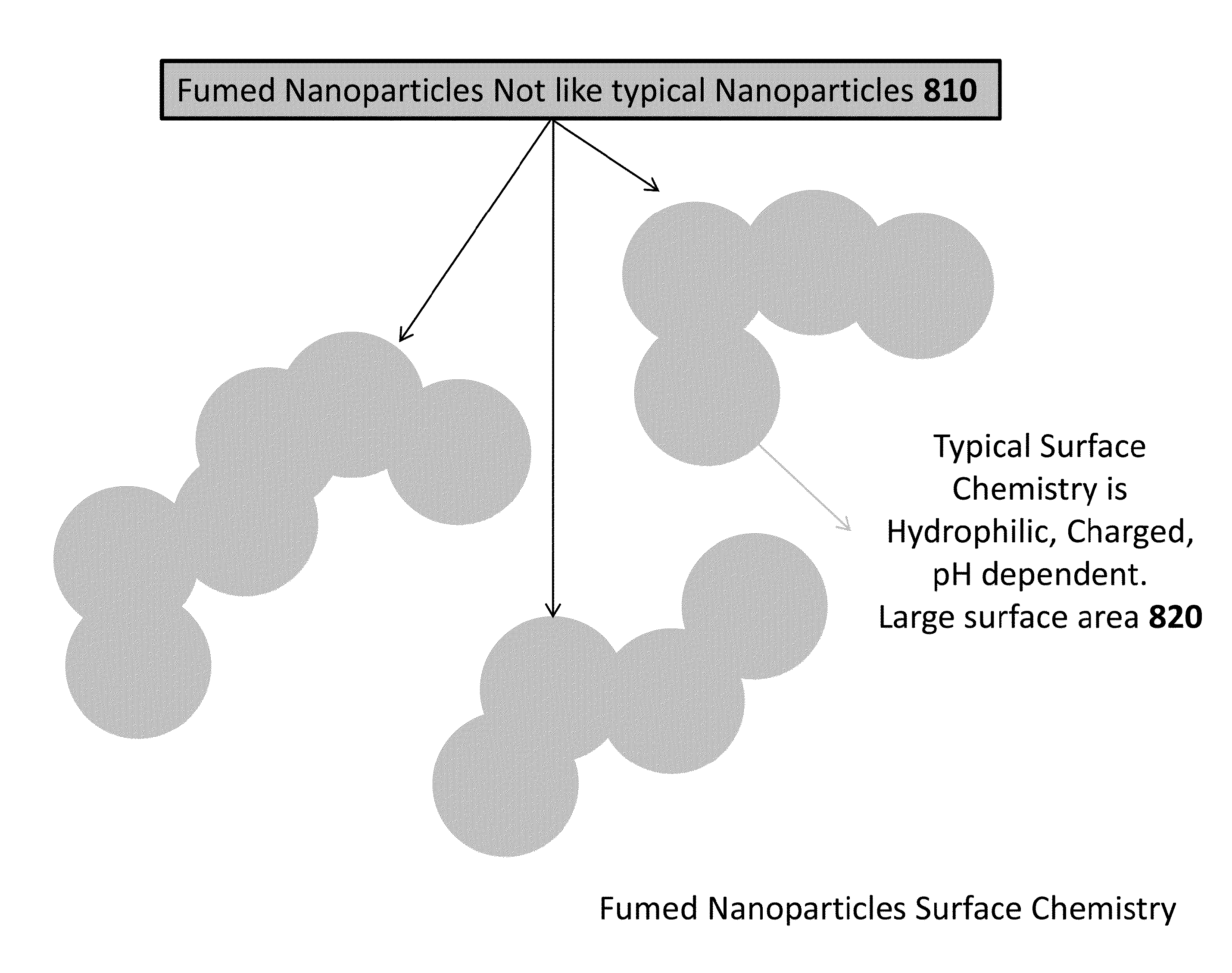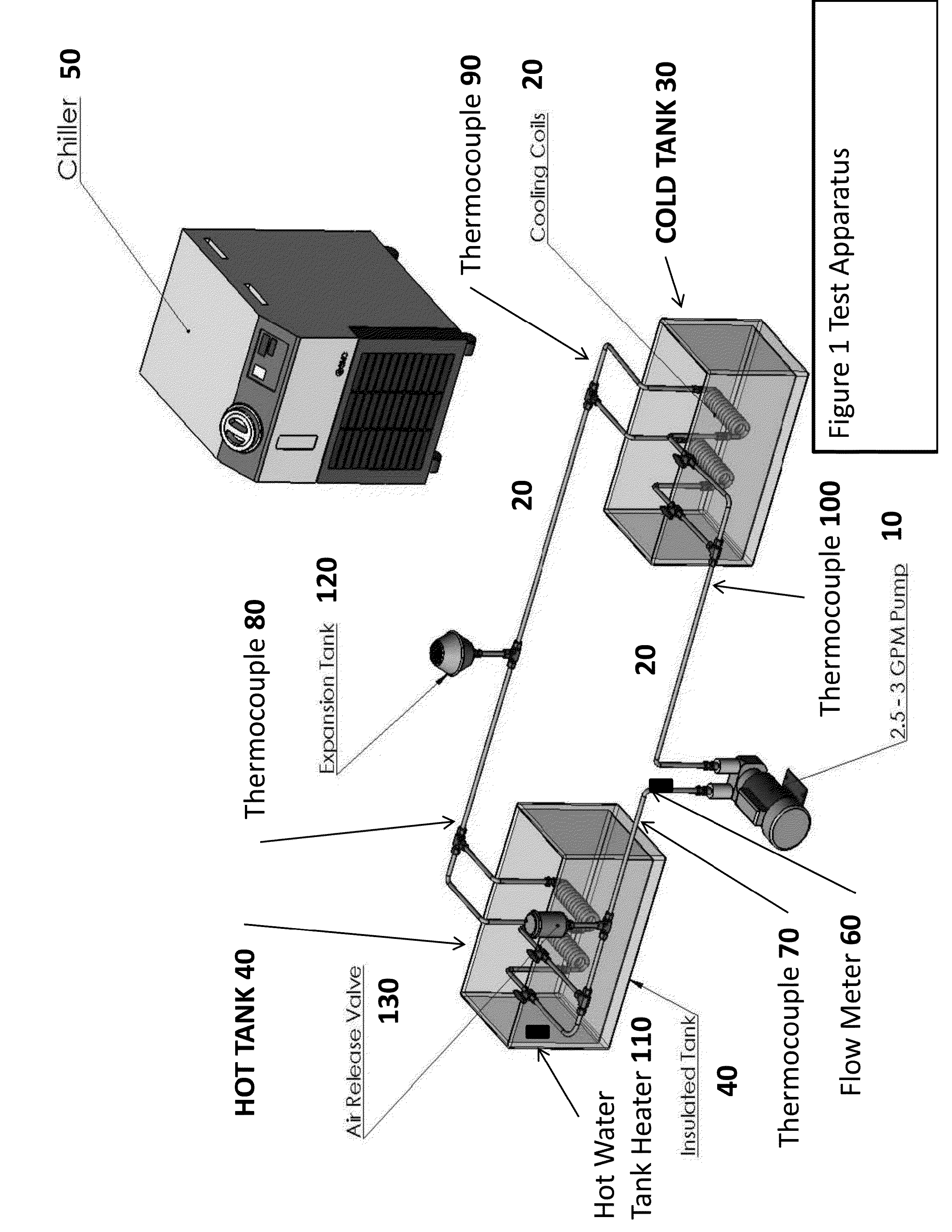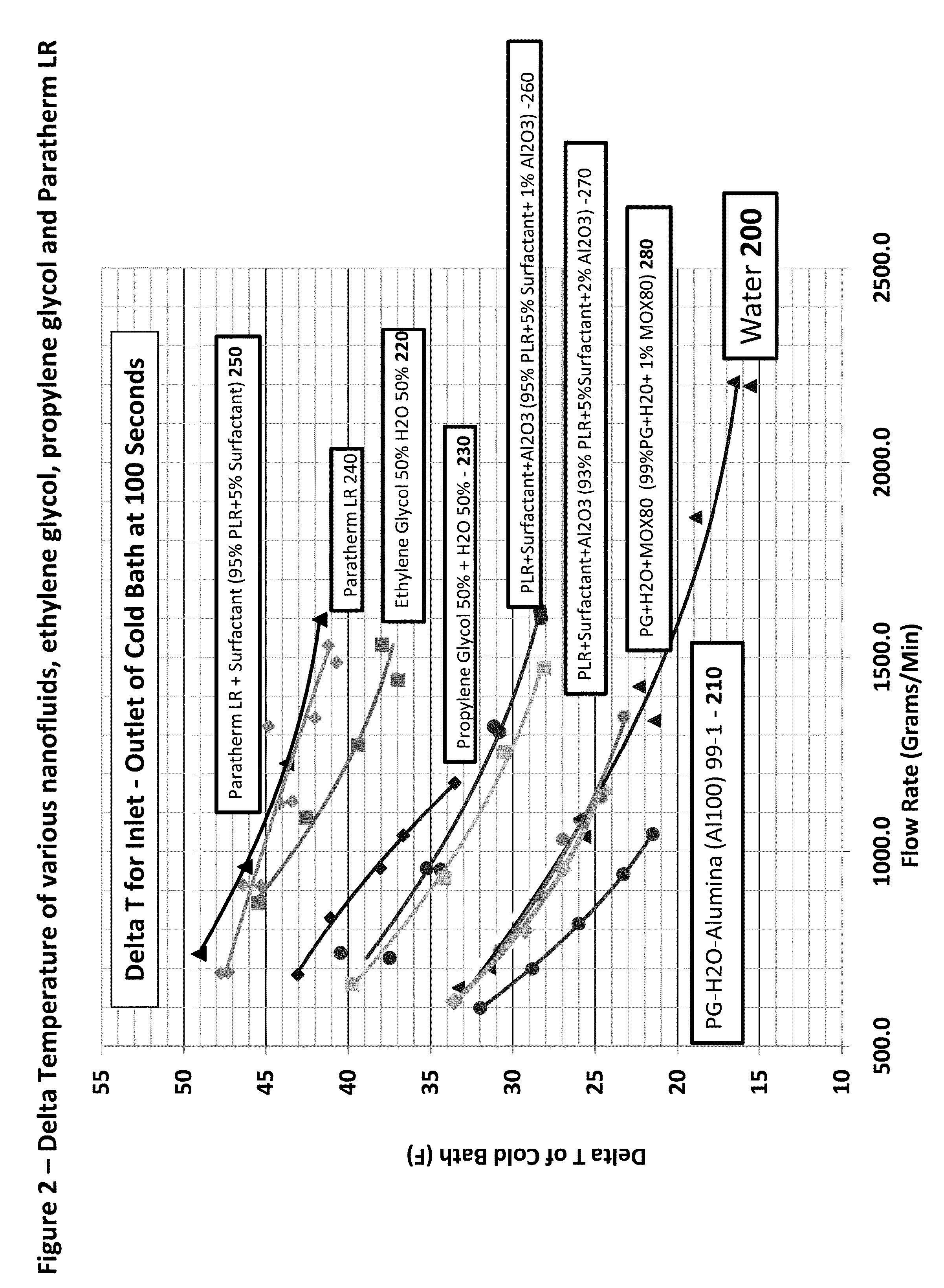Method of making nanaofluids for ground souce heat pumps and other applications
- Summary
- Abstract
- Description
- Claims
- Application Information
AI Technical Summary
Benefits of technology
Problems solved by technology
Method used
Image
Examples
Embodiment Construction
[0030]FIG. 1 illustrates a test apparatus for testing circulating fluids to be used in GHP. The circulating loop 20 connects the bore field or the pond to the heat pump's condenser in GHPs. A constant speed, two-speed or variable speed pump 10 circulates the circulation fluid usually propylene or ethylene glycol in the loop 20. The invention is a new type of nanofluid to be used in the loop 20 that increase the heat transfer. The test apparatus models a typical heat pump and has a cold tank 30 and hot tank 40. A chiller 50 can be used in the cold tank to maintain near isothermal temperatures in the cold tank 30. The goal is to create a heat transfer environment similar to ground source heat pump, where 85 F loop circulating fluid leaves the heat pump and enters the ground loop or pond loop. In the test apparatus the hot tank 40 presents the condenser of the GHP and the cold tank 30 represents the bore field or pond. In this test apparatus the water temperature in the cold tank 30 is...
PUM
 Login to View More
Login to View More Abstract
Description
Claims
Application Information
 Login to View More
Login to View More - R&D
- Intellectual Property
- Life Sciences
- Materials
- Tech Scout
- Unparalleled Data Quality
- Higher Quality Content
- 60% Fewer Hallucinations
Browse by: Latest US Patents, China's latest patents, Technical Efficacy Thesaurus, Application Domain, Technology Topic, Popular Technical Reports.
© 2025 PatSnap. All rights reserved.Legal|Privacy policy|Modern Slavery Act Transparency Statement|Sitemap|About US| Contact US: help@patsnap.com



